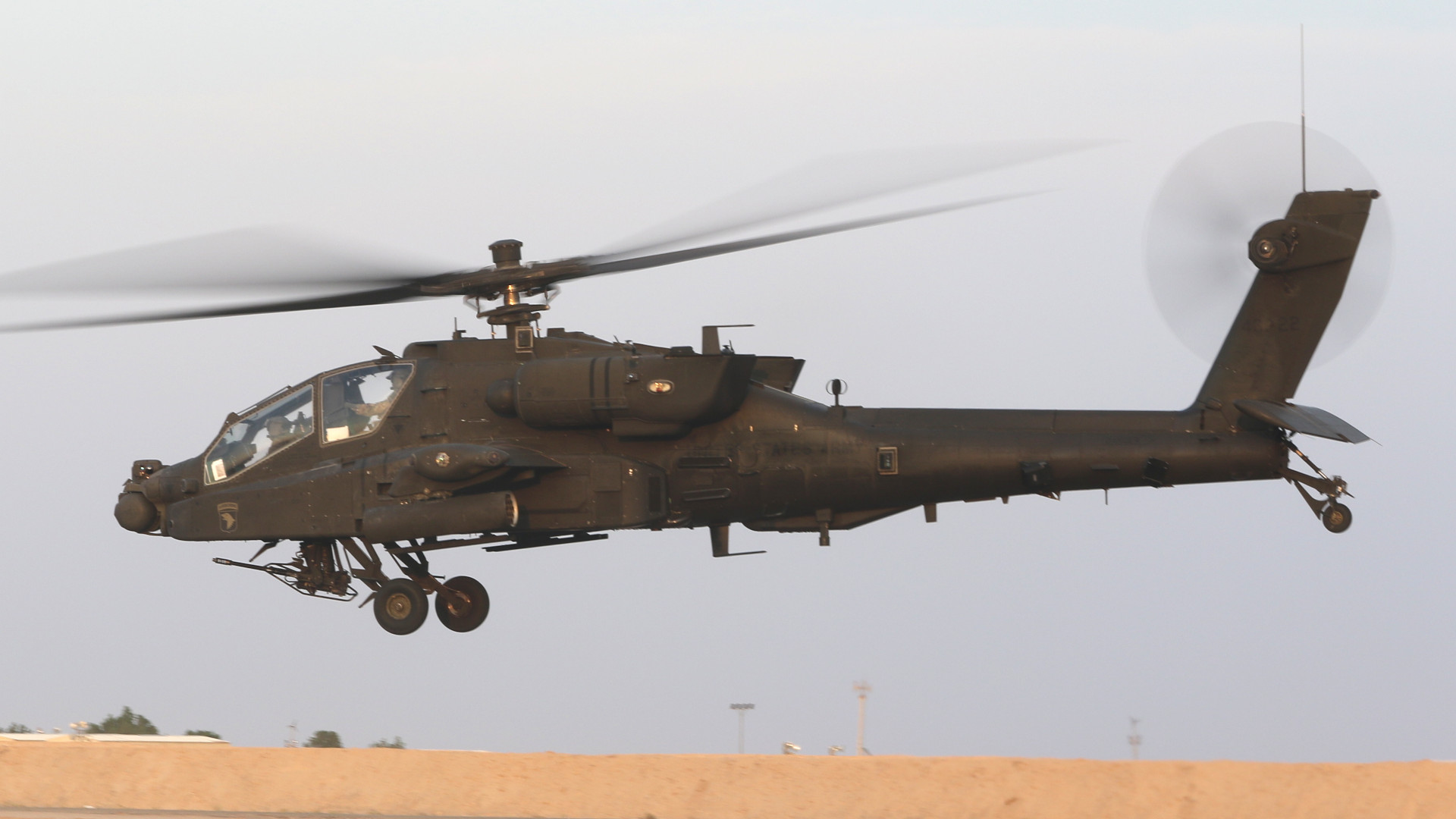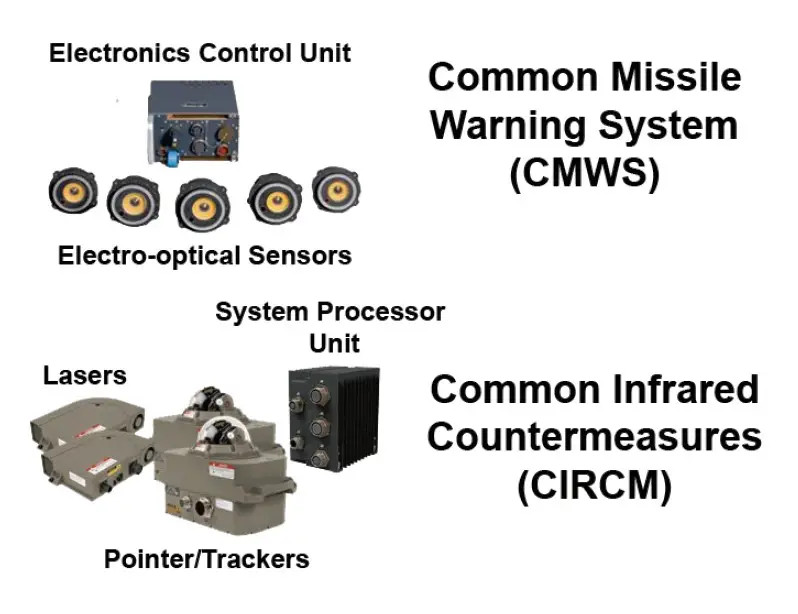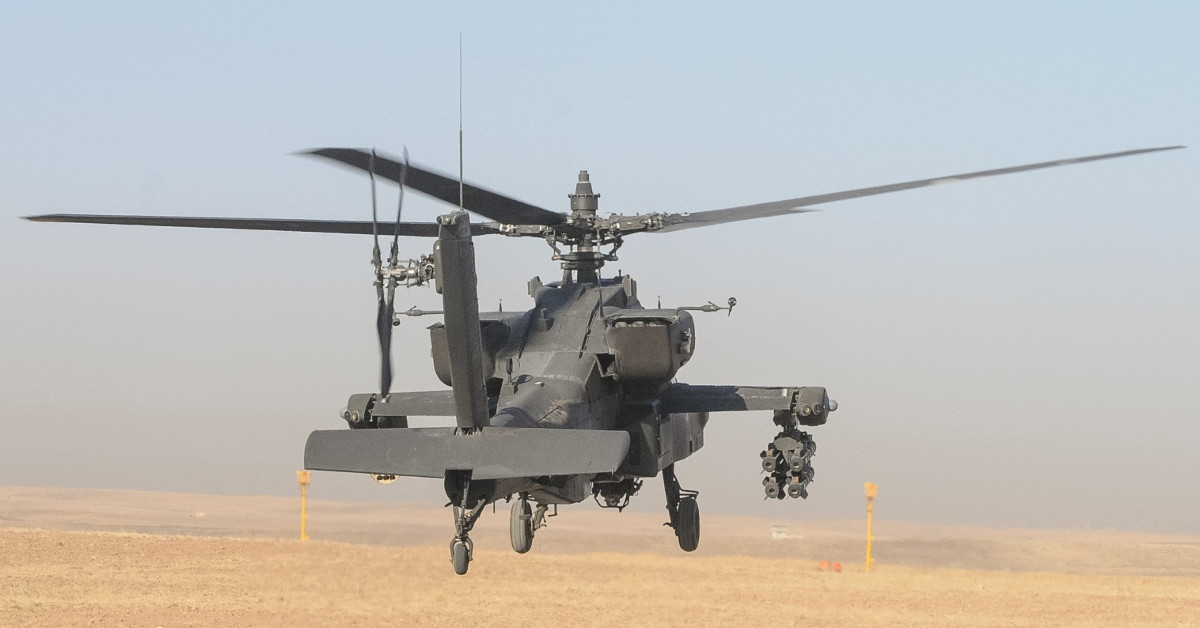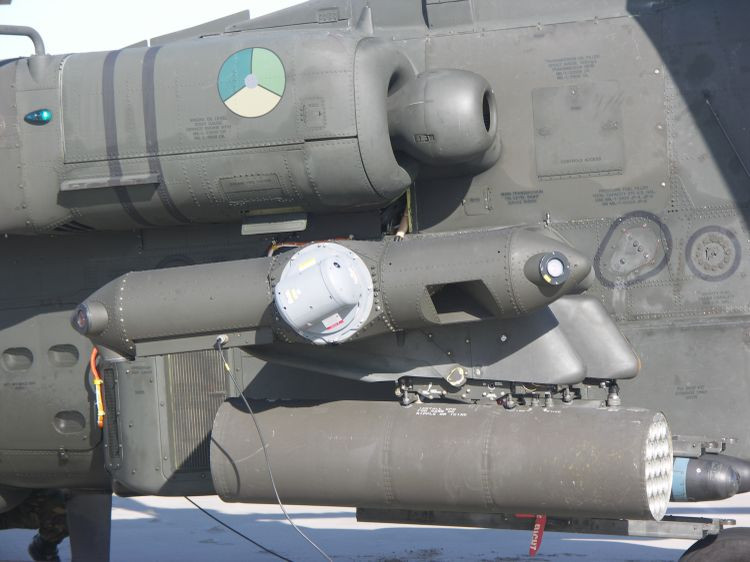U.S. Army AH-64E Apache attack helicopters are now being equipped with the service’s Common Infrared Countermeasures self-protection system, or CIRCM. A directional infrared countermeasures system, CIRCM gives the helicopters a valuable additional layer of defense against incoming heat-seeking, short-range surface-to-air missiles. This includes shoulder-fired types referred to as man-portable air defense systems, or MANPADS, which present very real threats on modern battlefields, as has been most recently highlighted in the course of the ongoing war in Ukraine.
It is unclear when the Army first began installing CIRCM systems on its AH-64Es. Pictures available through the U.S. military’s Defense Visual Information Distribution Service (DVIDS) website show Apaches with the system, including examples forward deployed in the Middle East, at least as far back as October 2022. The following month, the Army announced that CIRCM had reached initial operational capability after being fitted to more than 100 unspecified aircraft.

The Northrop Grumman-made defensive system, which entered full-rate production for the Army in May 2021, is also known to be in use on the service’s UH-60 Black Hawk utility helicopters. The Army has said in the past that the plan is to eventually integrate it onto its CH-47F Chinook heavy-lift helicopters, but it’s unclear if that process has started.
The complete CIRCM system includes a centralized control unit and a pair of “pointer/trackers,” each of which consists of a turreted assembly underneath a glass dome that directs a laser beam onto the seeker head of an incoming infrared-homing missile. The beam then blinds or otherwise confuses the seeker, throwing the missile off course. On the AH-64E, the pointer/trackers are installed on the helicopter via sponsons attached to the tips of its stub wings.


On Army UH-60s, the system is cued to incoming threats by the existing AN/AAR-57 Common Missile Warning System (CMWS), a separate array of electro-optical sensors that provides alerts about incoming heat-seeking missiles and hostile ground fire, on those helicopters. While we don’t know for sure, a similar arrangement is likely used on the AH-64E, which is also equipped with the CMWS. Warning sensors are also seen on the sponsons that hold the pointer/trackers. With CIRCM installed, the Apaches, like the Army’s Black Hawks, still retain their ability to carry dispenser ‘buckets’ for decoy flares and chaff.

The integration of CIRCM on Army Apaches is the latest development in the service’s efforts to integrate a DIRCM system of some kind onto these helicopters, among others, which has been something of a saga dating back to at least 2015. That year, the service began its search for a standardized DIRCM system for its helicopters in response to an urgent operational request from special operations forces in the Middle East.
As an interim solution, the Army integrated a version of the somewhat confusingly named AN/AAQ-24(V)N Large Aircraft Infrared Countermeasure (LAIRCM), another Northrop Grumman DIRCM system, onto some of its Apaches starting in 2017. AN/AAQ-24(V)N is visually distinct from CIRCM in a number of ways, including a different pointer/tracker design.

Army Black Hawks and Chinooks, including MH-47Gs assigned to the elite 160th Special Operations Aviation Regiment, also received AN/AAQ-24(V)N installations.
The AN/AAQ-24 series, earlier versions of which were also called Nemesis, has long been in use on various other U.S. military aircraft, ranging from U.S. Navy and Marine Corps helicopters to the Air Force’s highly specialized VC-25A “Air Force One” and C-32A “Air Force Two” jets. The system is also in use with a number of foreign armed forces.
The Army subsequently revealed that it had encountered numerous issues in its efforts in integrating the AN/AAQ-24(V)N system onto its helicopters, as you can read more about here. This seemed somewhat curious at the time, and still does, given the Navy and Marine Corps’ experience with this system and installing it on helicopters. Other countries, notably the Netherlands, were already employing AN/AAQ-24-based DIRCM systems on their Apaches at the time, as well. LAIRCM variants continued to be used for years afterward on Army helicopters on an interim basis, regardless.

A number of Army CH-47s were fitted with the AN/ALQ-212 Advanced Threat Infrared Countermeasures (ATIRCM), a DIRCM system made by BAE Systems. The Army had hoped to install ATIRCM across its helicopter fleets, but found it too bulky and power-intensive to integrate onto the Apache or Black Hawk. Pictures available through DVIDS show Chinooks flying with either the AN/AAQ-24(V)N or AN/ALQ-212 system fitted in the past year or so.
At least for the Army’s Apaches and Black Hawks, the issue seems increasingly moot as CIRCM is now being integrated onto both types.
The value of integrating some kind of DIRCM system onto the Army’s AH-64s, among other helicopters, certainly hasn’t diminished over the years. Russia’s war on Ukraine has only underscored the threat that short-range heat-seeking missiles, especially MANPADS, among other air defense systems, pose to helicopters and other aircraft on modern battlefields. Both Russian and Ukrainian helicopter forces, among other components of their respective air arms, have suffered significant losses in the course of the fighting to date.
MANPADS are continuing to proliferate around the world, including among non-state actors, too.
The Army is of course also in the process of a larger over-arching effort to acquire replacements for at least a large portion of its AH-64s and UH-60s, and potentially its CH-47s, through its Future Vertical Lift initiative. In December 2022, the service announced that it had selected a tilt-rotor design from Bell based on the company’s V-280 Valor as the winner of its Future Long Range Assault Aircraft, or FLRAA, competition, a design that is now expected to replace most, if not all, of its Black Hawks. Sikorsky, now a division of Lockheed Martin, which together with Boeing had offered an advanced compound helicopter called the Defiant X, is now protesting that contract award.
A large number of the Army’s AH-64s are set to be replaced by the winner of the separate Future Attack Reconnaissance Aircraft (FARA) competition. Sikorsky’s Raider X and Bell’s 360 Invictus are vying for that contract. Boeing is also pitching a major upgrade package for the Apache.
Whatever ultimately happens to the Army’s Apache fleet, a significant number of those helicopters are set to continue flying for years to come and they are now receiving an important new defensive upgrade in the form of CIRCM.
Contact the author: joe@thedrive.com
